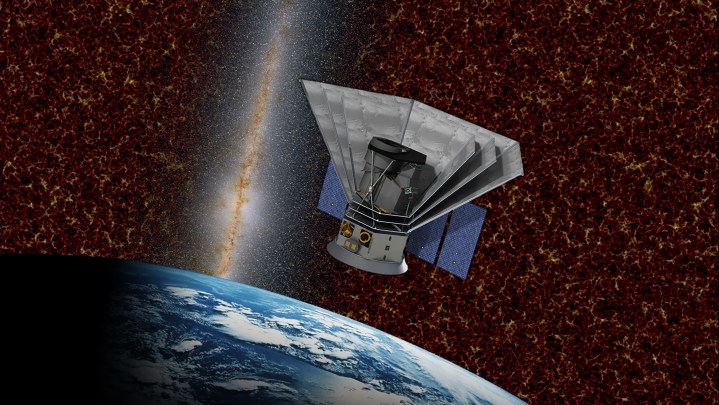
NASA is launching an ambitious new mission: To map the entire sky in order to understand the origins of the universe. The Spectro-Photometer for the History of the Universe, Epoch of Reionization and Ices Explorer (SPHEREx) mission will launch in 2023 and is planned to last for two years, surveying hundreds of millions of galaxies both close to us and far away.
SPHEREx will use optical and near-infrared light to survey the sky, capturing data on over 300 million galaxies and the more than 100 million stars within our own galaxy. Its primary goal is to learn about how our universe evolved and how common the essential ingredients for life are in planetary systems in our galaxy. It will map the entire sky every six months to create a map in 96 color bands, and will be searching for water and organic molecules like methanol or acetone in regions where stars and being born and new planets are forming.
“This amazing mission will be a treasure trove of unique data for astronomers,” Thomas Zurbuchen, associate administrator for NASA’s Science Mission Directorate, said in a statement. “It will deliver an unprecedented galactic map containing ‘fingerprints’ from the first moments in the universe’s history. And we’ll have new clues to one of the greatest mysteries in science: What made the universe expand so quickly less than a nanosecond after the big bang?”
A further function of SPHEREx will be to identify targets which can be studied in more detail by future missions such as the long-awaited James Webb Space Telescope, which will be the world’s most powerful telescope when it launches — 100 times as powerful as Hubble.
The cost of the SPHEREx project is a hefty $242 million, which does not include launch costs. But NASA is confident that the mission will be worth it: “I’m really excited about this new mission,” said NASA administrator Jim Bridenstine. “Not only does it expand the United States’ powerful fleet of space-based missions dedicated to uncovering the mysteries of the universe, it is a critical part of a balanced science program that includes missions of various sizes.”



